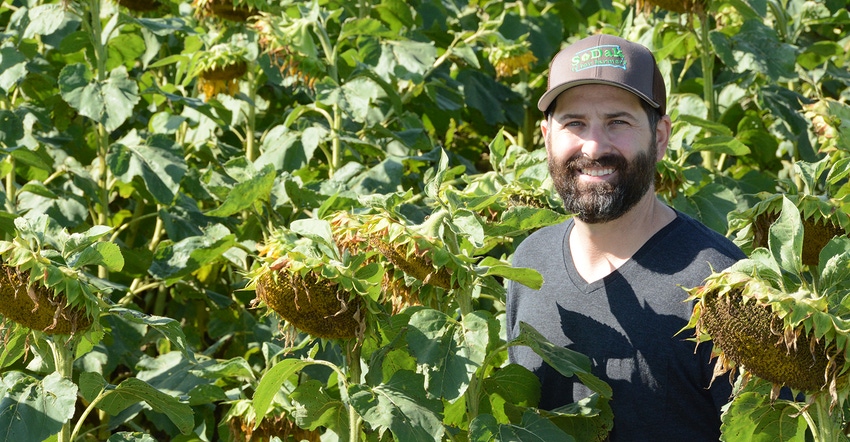
Four things are helping make sunflowers one of the most profitable and consistent crops for Lance Hourigan, Lemmon, S.D.
1. Precision planting. Lance and his father, Robert, plant sunflowers with an air seeder and planter. They have gotten better stands and higher yields with the planter. Uniform spacing in the rows makes a difference, Lance says.
2. Sunflower combine head. The Hourigans use a Sunmaster Harvest Head from Sheyenne Tooling, Sheyenne, N.D. It saves more seed and picks up lodged sunflowers better than many other brands they’ve tried, Lance says.
3. Combine air tower. Stelter Repair, New Leipzig, N.D., made an air tower, or chimney, for the Hourigans’ combines to help reduce the risk of the combines catching fire while harvesting sunflowers. The tower draws in air from above a combine, where the there is less dust and debris from threshing, to blow over the engine to help cool and clean it.
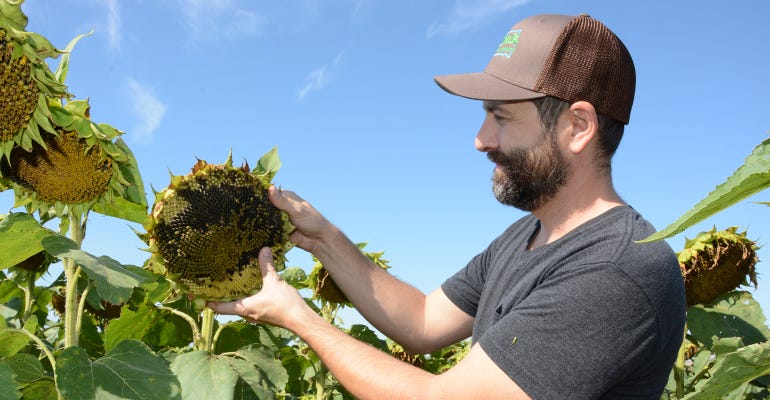 GOOD POTENTIAL: Lance checks the progress sunflowers are making toward maturity as they begin filling heads with seed.
GOOD POTENTIAL: Lance checks the progress sunflowers are making toward maturity as they begin filling heads with seed.

4. Herbicide tolerant seed. The Hourigans plant ExpressSun and Clearfield varieties and apply Express or Beyond post emergent herbicides, respectively, over the top of them to control broadleaf and grass weeds. They make sure the field is weed-free before planting sunflowers by rotating sunflowers after corn and applying and incorporating a preplant herbicide.
Best fit for the West
Sunflower is well suited for the Hourigan farm, which is located in northwest South Dakota, for several reasons:
Drought tolerance. The Hourigan farm is in a region that receives about 16 inches of precipitation annually.
Widest planting window. They can be planted from early May be late June, of any of the crops they grow. The flexibility is important if it is wet in the spring.
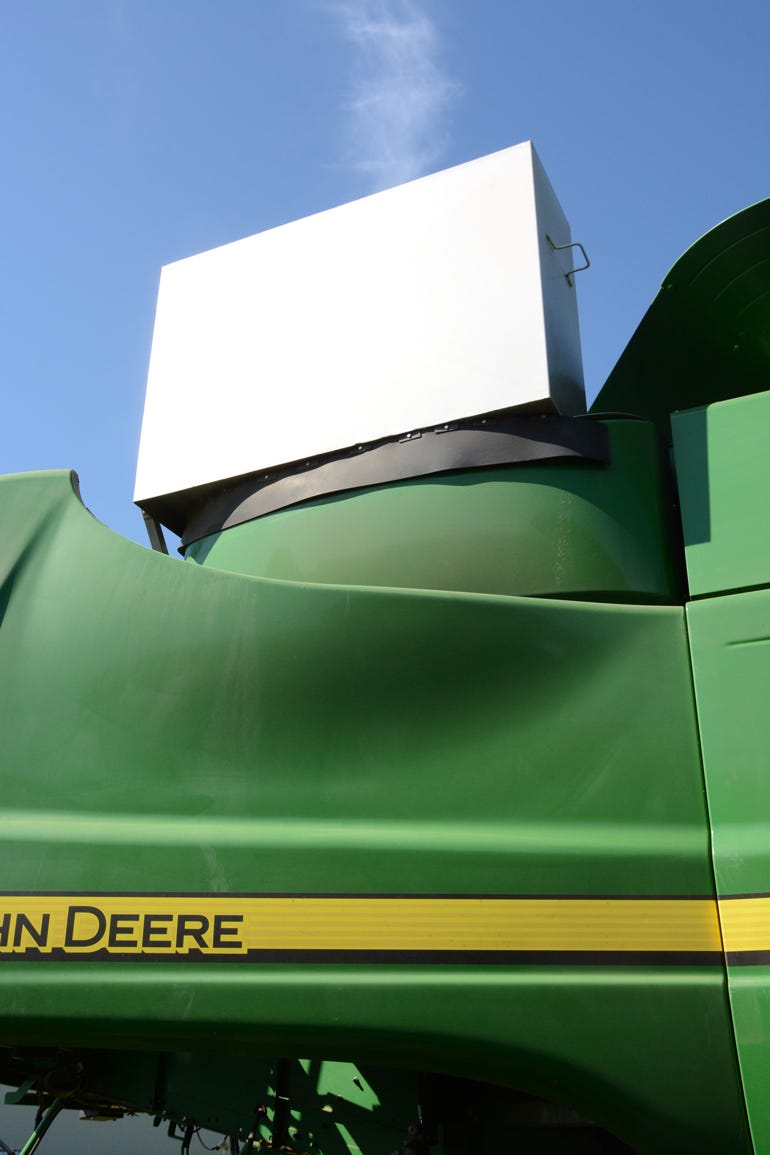 FIRE PRECAUTION: An after-market combine air tower, or chimney, draws clean air from above the combine. If the air that it blown over the combine engine isn’t full of sunflower dust and debris, there is less risk of a fire starting around the engine or exhaust.
FIRE PRECAUTION: An after-market combine air tower, or chimney, draws clean air from above the combine. If the air that it blown over the combine engine isn’t full of sunflower dust and debris, there is less risk of a fire starting around the engine or exhaust.

Well adapted. They grow well on just about all the soil types they have.
Blackbird free. The Hourigan farm is not located in the traditional blackbird migration flyway.
Healthy plants. Disease pressure is lower where the Hourigans farm than in other parts of the Dakotas because it is less humid. Improved varieties with disease tolerance have helped, too.
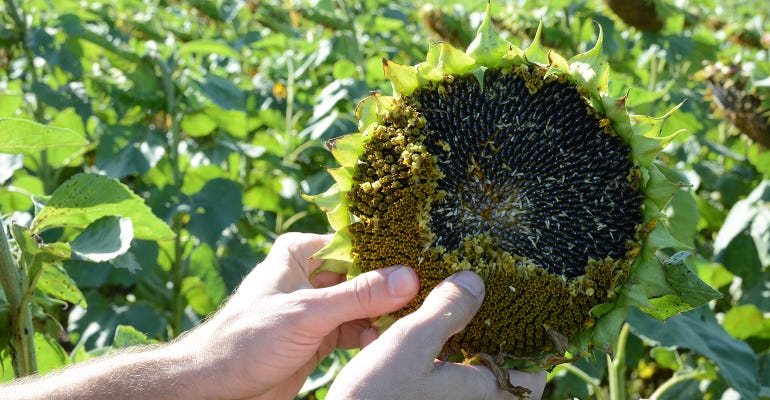 HIGH YIELD: Seed fills the center of a sunflower head, indicating that there was good pollination.
HIGH YIELD: Seed fills the center of a sunflower head, indicating that there was good pollination.

Good prices. Sunflower prices have been competitive with other grain and oilseed crops. The Hourigans grow high oleic oil sunflowers. Demand is growing for the oil, used mainly for frying and in food ingredients. It is a heart-healthy oil. It doesn’t have to be hydrogenated and is trans-fat free. Hourigan, who is the current vice-president of the National Sunflower Association, has participated in trade missions to promote high oleic sunflower oil.
Fun with sunflowers
Growing sunflowers is fun, too, Lance says. Sunflowers plants are big and showy. Their blooms add a splash of bright yellow color to the green and gold landscape and blue skies of northwestern South Dakota.
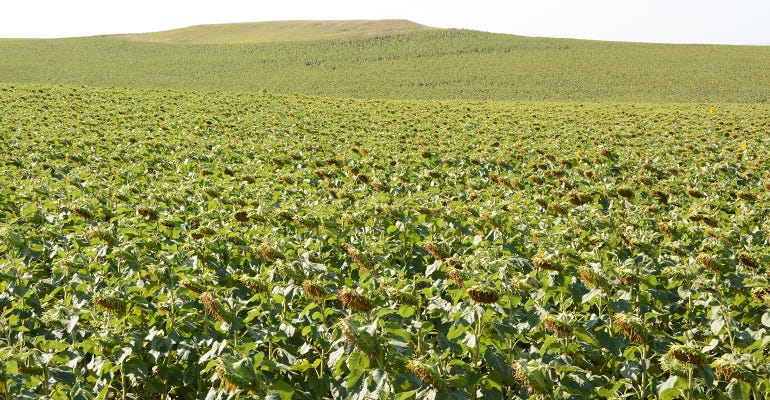 SUITED FOR FLOWERS: A field of flower rises to a small knoll on the Hourigan farm. Sunflowers seem to do well on most of the soil types on their farm.
SUITED FOR FLOWERS: A field of flower rises to a small knoll on the Hourigan farm. Sunflowers seem to do well on most of the soil types on their farm.

“There’s nothing I like seeing more than a big field of sunflowers in bloom,” he says.
About the Author(s)
You May Also Like






